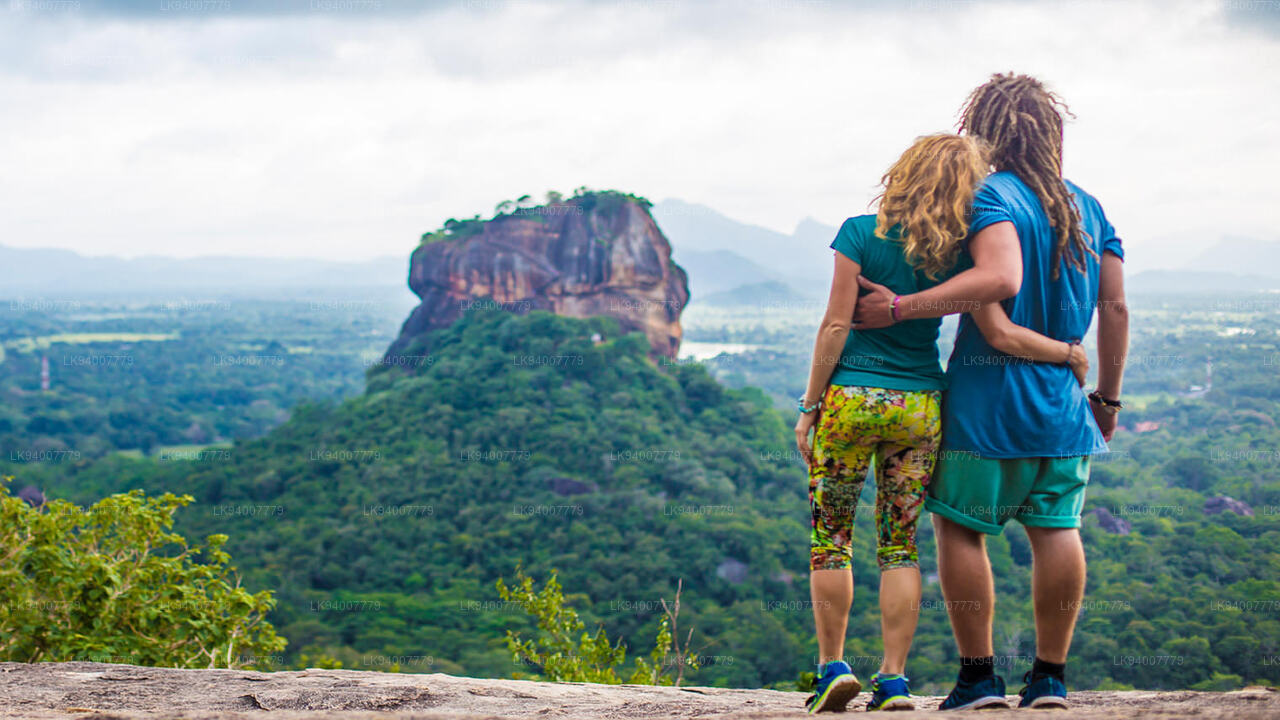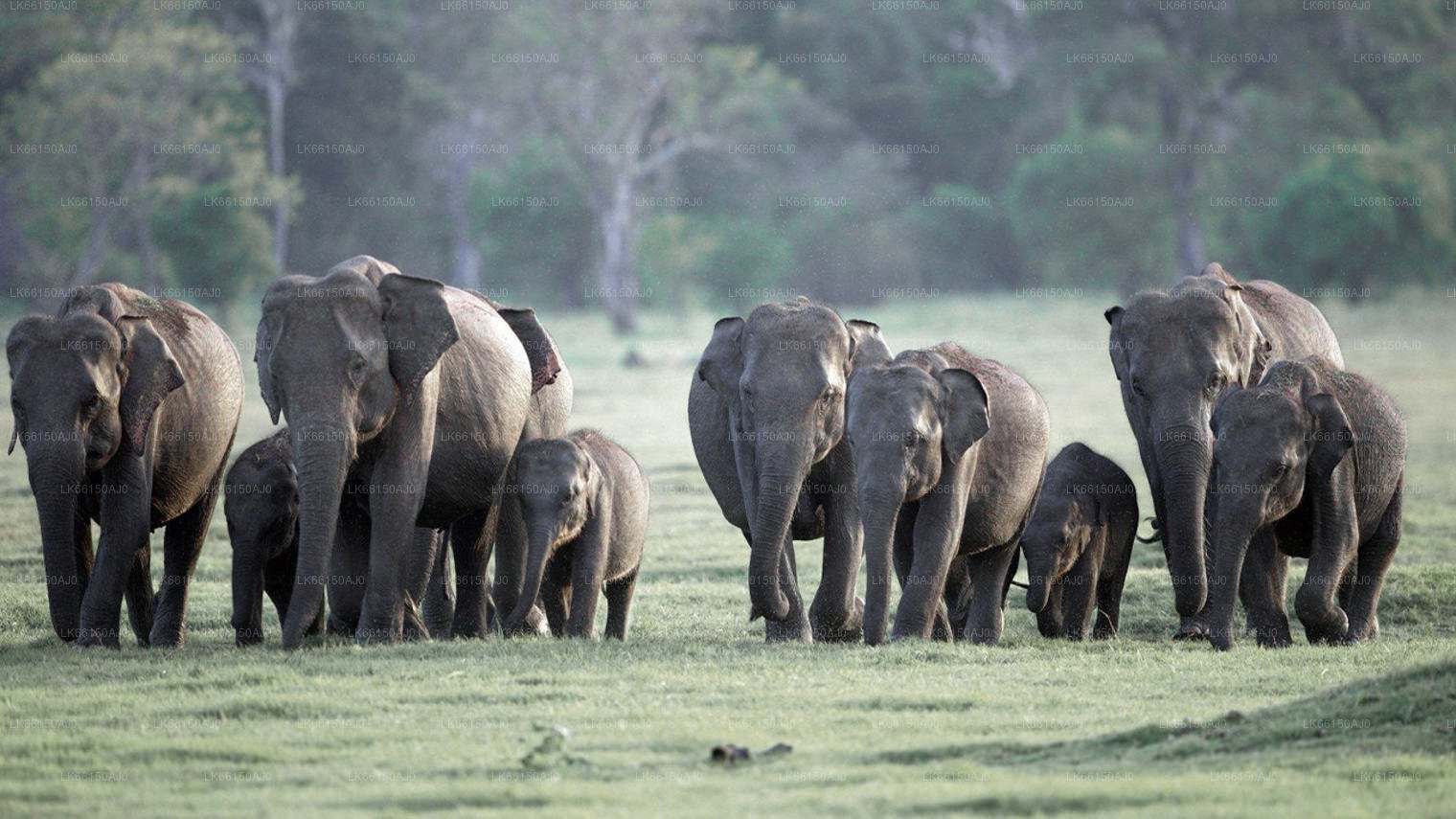
Minneriya linn
Sri Lankal asuv Minneriya on tuntud oma Minneriya rahvuspargi poolest, mis on bioloogilise mitmekesisuse keskus ja koduks suurele Aasia elevantide populatsioonile. Pargi keskpunktiks on maaliline Minneriya veehoidla, mis meelitab ligi loodushuvilisi ja pakub vapustavat tausta loodussafariteks.
Minneriya National Park
Minneriya National Park is located 182 km away from Colombo in the North Central Plains of Sri Lanka. The major city closest to Minneriya National Park is Polonnaruwa.
The renovated vast ancient Minneriya Rainwater Reservoir that irrigates the considerable area of the district of Polonnaruwa is the focal point of the Minneriya National Park.
Being part of the elephant corridor which joins up with Kaudulla and Wasgomuwa parks, Minneriya National Park gives the opportunity to see herds of Elephants throughout the year. May to October is the best period to visit Minneriya National Park in view of the famous Gathering of the wild elephants.
The Climate and Altitude
Minneriya National Park that covers an area of 8,889 hectares is of tropical monsoon climate: annual rainfall is about 1146mm and mean annual temperature is 27.5 centigrade. The altitude ranges from100m to 885m at the top of Nilgala peak.
Accommodation Options
Minneriya National Park has no accommodation facilities within its boundaries. But the cities close to Minneriya National Park-Sigiriya, Polonnaruwa, Habrana and Giritale- are clustered with luxury hotels and lodges.
Vegetation
The vegetation of the park consists of tropical dry mixed evergreen forests, abandoned chena lands, grasslands and wetlands. The open grasslands and old chena lands are dominated by the many species of small shrub.
The abandoned chenas are dominated by kukuruman (Randia dumetorum), keppettia (Croton sp.) wara (Calotropis Gigantea) and grasses i.e. katu-una (Bambusa bambos), wali indi (Phonenix zeylanica), illuk (Imerata Cylindirca) and pohon (Panicum Maximum).
The phytoplankton is dominated by Microcystis and Melosira.Among the large trees are palu (Manilkara Hexandra), Satin (Chloroxylon Swietenia), milla (Vitex Altissima), Kalumediriya (Diospyros Quaesita), halmilla (Berrya Cordifolia), weera (Drypets Sepiaria).
Mammals
Among the 24 species of mammals resident in the park are Elephants, Leopards, Sloth Bear, Spotted Deer, Sambar Deer, Wild Buffalo, Wild Pig, Grey Langers, Purple-faced Leaf Monkey, three species of Mongoose, Porcupine and Indian Pangolin. Pre-booked Minneriya Safari is the best way to see them all.
Amphibians & Reptiles
Among the nine species of Amphibians at Minneriya National Park are the endemic and endangered Slender Wood Frog and the Common Tree Frog. Of the 25 species of reptiles recorded in the park 8 are endemic including the Red-lipped Lizard. Water and Land Monitors are also seen here. The Mugger Crocodile can be seen near the tank. Many species of fresh water fish are found in the Minneriya reservoir.
Important Info: Elephant Migration between Minneriya, Kaudulla and Hurulu Eco Park
There are three national parks in the close proximity within that region. They are the Minneriya National Park, the Kaudulla National Park, and the Hurulu Eco Park,. All of the three parks are immensely popular among locals and foreigners the world over for their large herds of elephants. Generally, each year during the months of July to September large groups of elephants are found in the Minneriya National Park and then they migrate to Kaudulla National Park during the months October to November due to high rains and lakes getting filled up.
Polonnaruwa ringkonna kohta
Polonnaruwa on Sri Lanka põhja-keskprovintsi suuruselt teine linn. Iidne Polonnaruwa linn on UNESCO poolt maailmapärandi nimistusse kuulutatud. Polonnaruwal on pikk vallutuste ja võitluste ajalugu ning see moodustab õigustatult kolmanda elemendi kultuurikolmnurgas. Kandyst umbes 140 km kirdes asuv Polonnaruwa pakub ajaloo- ja kultuurisõpradele lõputut naudingut, kuna seal on arvukalt olulisi vaatamisväärsusi.
Suur osa tänapäeval säilinud füüsilistest varemetest on omistatud kuningas Parakrama Bahu I-le, kes kulutas palju kuninglikke ressursse linnaplaneerimisele, sealhulgas parkidele, ehitistele, niisutussüsteemidele jne. Tema valitsemisaega peetakse kuldajastuks, mil kuningriik õitses ja õitses visionääri valitseja all. Parakrama Samudra on mammutlik veehoidla, mis on nimetatud oma patrooni järgi. Populaarne kuningapalee, kaunilt nikerdatud kivist elevantidega ümbritsetud audientsi saal ja supelbassein peegeldavad tolle aja suurepäraseid insenerivõimeid.
Põhja-Keskprovintsi kohta
Põhja-Keskprovints, mis on riigi suurim provints, hõlmas 16% riigi kogupindalast. Põhja-Keskprovints koosneb kahest ringkonnast: Polonnaruwa ja Anuradhapure. Anuradhapura on Sri Lanka suurim ringkond. Selle pindala on 7128 km².
Põhja-Keskprovints pakub investoritele arvukalt võimalusi oma ettevõtete alustamiseks, eriti põllumajanduses, põllumajandusel põhinevas tööstuses ja loomakasvatussektoris. Üle 65% Põhja-Keskprovintsi elanikest sõltub põllumajandusest ja põllumajanduse baastööstusest. NCP-d nimetatakse ka "Wew Bendi Rajjeks", kuna provintsis asub üle 3000 keskmise ja suure veehoidla. Sri maha bodiya, Ruwanweli seya, Thuparama dageba, Abayagiri klooster, Polonnaruwa Rankot wehera ja Lankathilake on Põhja-Keskprovintsi hirmuäratavad kohad.








